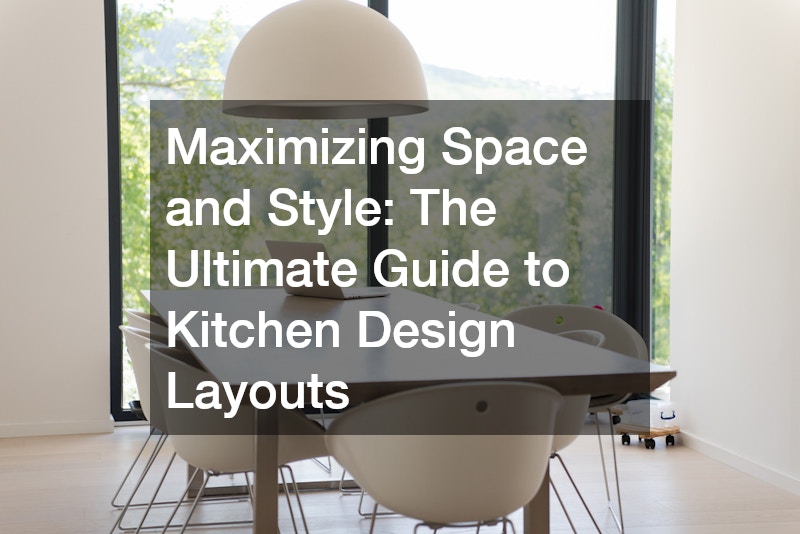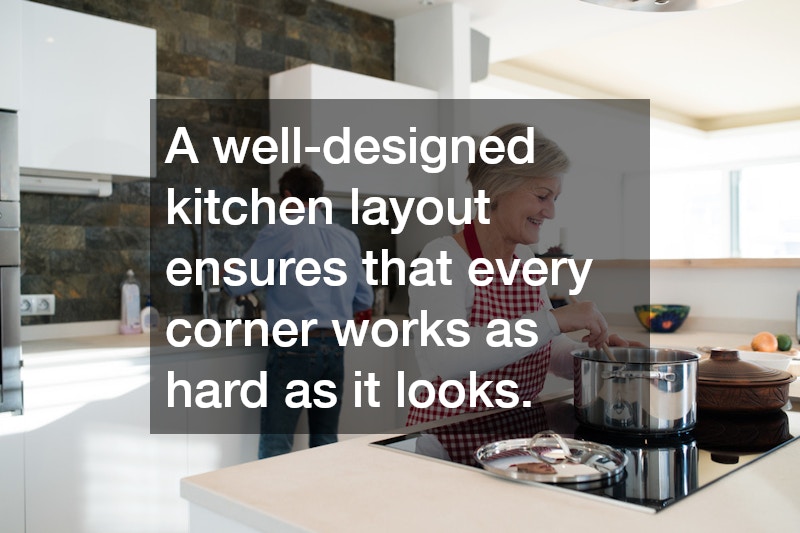
Designing a kitchen is more than just choosing cabinets and countertops; it’s about creating a space that is both functional and visually appealing. A well-thought-out kitchen design layout can transform a cramped, inefficient space into a hub of creativity, comfort, and convenience. Whether you’re remodeling your existing kitchen or building a new one, understanding the principles of kitchen design layout is essential for maximizing both space and style.
Understanding Kitchen Design Layouts
The foundation of any great kitchen begins with its layout. A kitchen design layout refers to the arrangement of appliances, cabinets, countertops, and work areas within the space.
Choosing the right layout can improve workflow, enhance accessibility, and create an inviting atmosphere for family and guests. The most common kitchen layouts include the L-shaped, U-shaped, galley, and island designs.
-
L-shaped kitchens are ideal for open-plan homes, offering flexibility and ample counter space while keeping everything within reach.
-
U-shaped kitchens maximize storage and work areas, making them perfect for larger spaces where multiple cooks may work simultaneously.
-
Galley kitchens are narrow but efficient, designed to minimize steps between appliances.
-
Island kitchens provide extra counter space, storage, and seating, making them ideal for social gatherings.
Selecting a layout depends on the size of your space, your lifestyle, and how you intend to use the kitchen. A carefully chosen kitchen design layout ensures that the space is not only beautiful but also highly functional.
Tips for Maximizing Space
One of the key challenges in kitchen design is making the most of limited space. Regardless of your kitchen’s size, a well-planned layout can create the illusion of more room while keeping everything organized. Here are some tips to maximize space:
-
Utilize vertical storage – Installing tall cabinets or open shelving takes advantage of vertical space for storing dishes, cookware, and pantry items.
-
Incorporate multi-functional furniture – Kitchen islands or carts with built-in storage can double as prep stations, dining areas, or extra seating.
-
Optimize cabinet interiors – Pull-out drawers, lazy Susans, and deep drawers for pots and pans can make cabinets far more efficient.
-
Keep pathways clear – Avoid overcrowding the kitchen with unnecessary furniture to maintain smooth traffic flow.
By focusing on space optimization, you can ensure that every inch of your kitchen serves a purpose while still feeling spacious and inviting.
Balancing Style and Functionality
A kitchen should not only be practical but also reflect your personal style. Balancing aesthetics with functionality is key to creating a space that feels comfortable and visually appealing. Consider the following elements when designing your kitchen:
-
Color schemes – Lighter shades make small kitchens feel larger, while bold colors can create focal points or highlight features like an island or backsplash.
-
Materials and finishes – Combining materials like wood, stone, and metal adds texture and depth to the design. Durable surfaces also ensure the kitchen withstands daily wear and tear.
-
Lighting – Layered lighting, including task, ambient, and accent lights, can enhance both functionality and ambiance.
-
Decorative accents – Stylish hardware, pendant lights, or statement backsplashes add personality without compromising practicality.
When planning a kitchen design layout, it’s important to remember that style should complement function. A beautiful kitchen that isn’t efficient will quickly become frustrating to use, while a functional kitchen with no visual appeal can feel cold and uninspiring.
Planning the Work Triangle
The work triangle is a key concept in kitchen design layout that improves efficiency by minimizing the distance between the sink, stove, and refrigerator—the three primary work areas in a kitchen. A well-planned work triangle allows for smooth movement during cooking, reduces clutter, and saves time.
Here are some tips for implementing an effective work triangle:
-
Maintain an optimal distance – The ideal triangle distance is typically between 12 and 26 feet in total, keeping each point easily accessible.
-
Adjust for multiple cooks – If more than one person regularly uses the kitchen, consider creating secondary work zones to prevent congestion.
Integrating the work triangle into your kitchen design layout ensures that the space is not only stylish but also highly functional, supporting efficient movement and effortless meal preparation.
Incorporating Modern Kitchen Technology
Modern kitchens are no longer just about aesthetics—they integrate technology to make cooking easier and more enjoyable. Smart appliances, touchless faucets, and built-in charging stations are now common features in contemporary kitchen design layouts.
Some ways to incorporate modern technology include:
-
Smart refrigerators – These can track groceries, suggest recipes, and even connect to your smartphone.
-
Induction cooktops – Faster, safer, and easier to clean than traditional stovetops.
-
Pull-out pantry shelves and automated drawers – Improve accessibility while maintaining a sleek look.
By combining technology with a thoughtfully designed layout, you can create a kitchen that meets both modern demands and timeless style.
Creating a functional, stylish kitchen requires careful planning, from selecting the right layout to maximizing space, balancing aesthetics with practicality, and incorporating modern conveniences. A smart kitchen design layout can turn even the smallest or most awkward spaces into an efficient, inviting hub for cooking and gathering. By understanding key design principles, optimizing storage, and integrating modern solutions, you can transform your kitchen into a space that reflects your personality while enhancing everyday life.
Whether your goal is a sleek, minimalist aesthetic or a cozy, family-friendly environment, a well-designed kitchen layout ensures that every corner works as hard as it looks. Investing time in planning and designing your kitchen will pay off in functionality, style, and long-term enjoyment for years to come.



